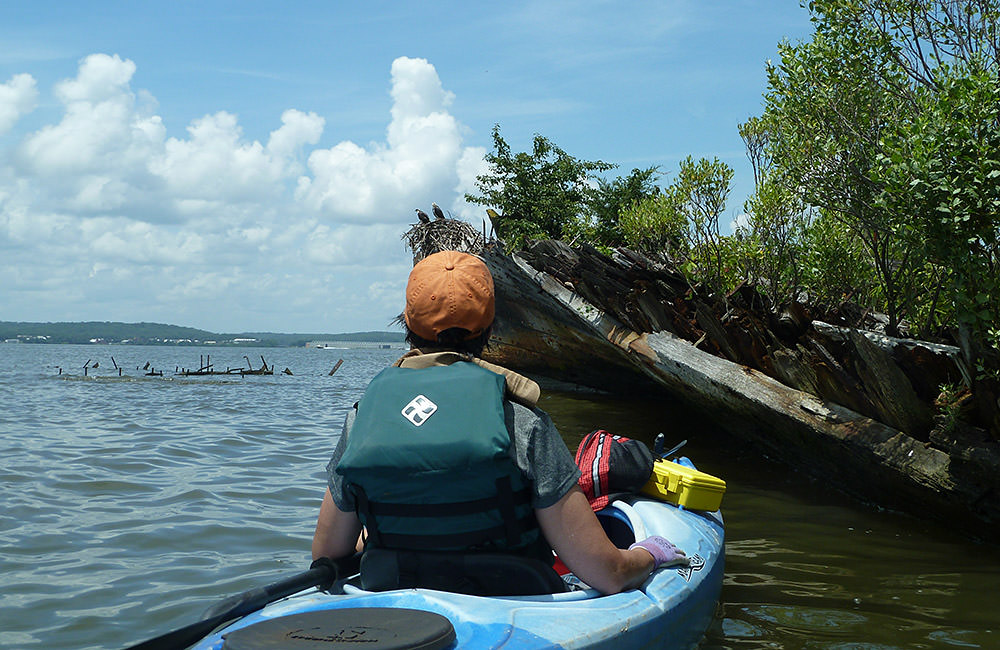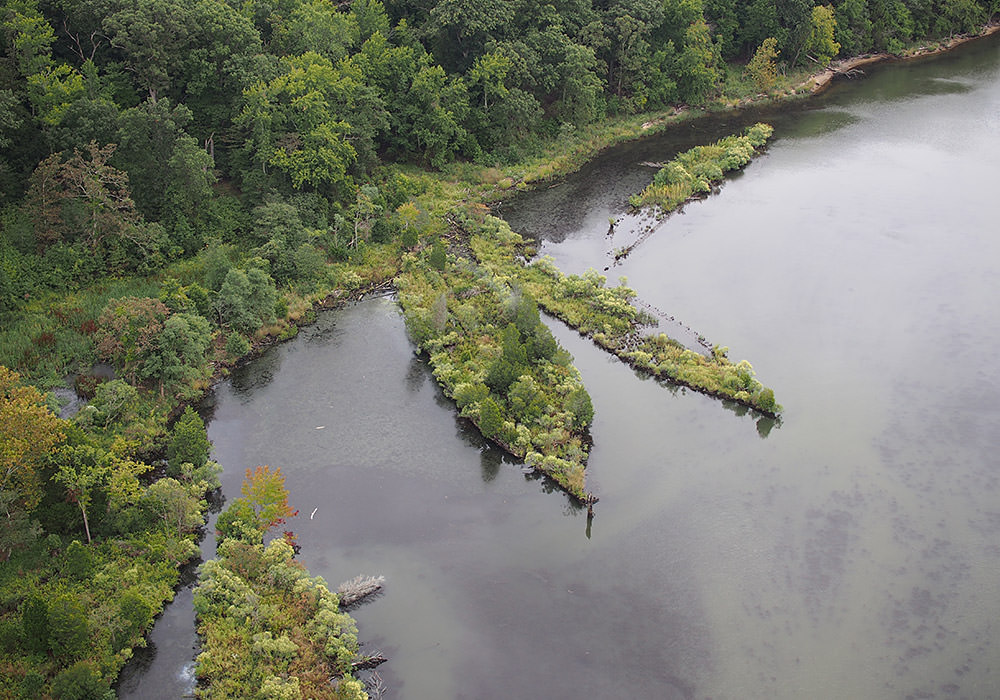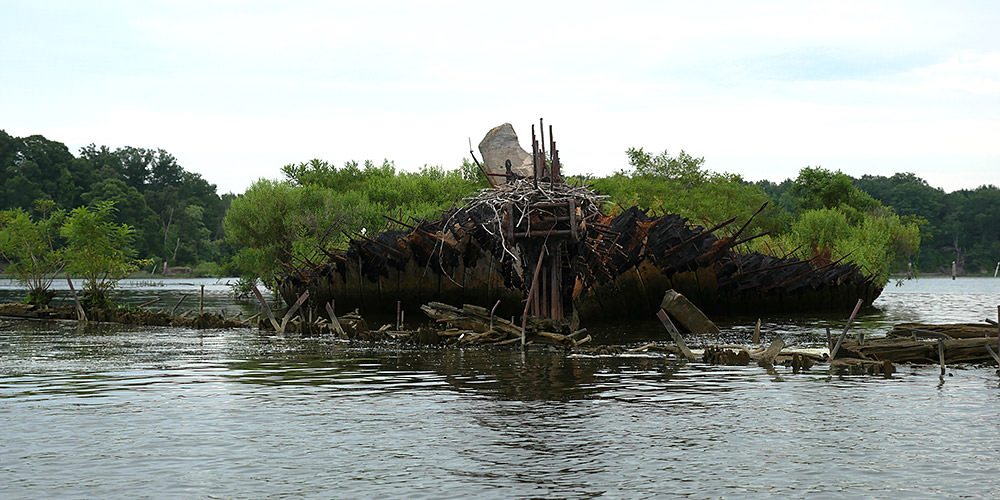Describing the Proposed Mallows Bay - Potomac River National Marine Sanctuary National Marine Sanctuary
By Megan Howes
February 2017
For the first time in two decades, NOAA is in the process of designating new national marine sanctuaries. One such site currently under consideration is the historically-significant Mallows Bay in Maryland’s Potomac River, which was nominated by Governor Martin O'Malley in 2014.

Supported by a broad coalition of community partners, the nomination was put forth with the goal to conserve and better share vast maritime heritage resources with the public. A new report (Mallows Bay-Potomac River Proposed National Marine Sanctuary Study Area Profile of Alternatives 2000 to 2015) accompanies the draft environmental impact statement, which is now on the Federal Register and open for public comment through March 31st.
The study area profile describes demographic and economic metrics in counties surrounding the area where the sanctuary is proposed, and reviews use of relevant resources. Indicators like population density, major industries and rates of employment and economic growth are presented, and the environmental impact statement explores the way that a sanctuary will fit into the existing socioeconomic environment.

Mallows Bay is located 40 miles south of Washington, DC, on the Maryland side of the Potomac River. The site contains one of the most extensive and diverse assemblages of shipwrecks in the Western Hemisphere. Nearly 200 known vessels were sunk in Mallows Bay, spanning the entirety of United States maritime history. Most notably, a hundred wooden steamships, collectively known as the "Ghost Fleet of Mallows Bay" represent a massive national effort to produce the U.S. Emergency Fleet during the first world war.
The national marine sanctuary nomination was backed by strong community support due to the anticipated social and economic benefits that a sanctuary would afford, developed through channels of tourism and recreation alongside research and education initiatives. New regulations will focus on protection of the numerous shipwrecks and associated maritime heritage. Land-use planning and management of natural and wildlife resources will remain under the current authorities.
The report outlines the three potential sets of boundaries and regulations NOAA explored to determine the optimal extent of the sanctuary. The preferred set protects at-risk maritime heritage resources within a 52-square-mile area. It is expected to produce direct, long term, cumulative benefits through increased visitation for recreation and research, and development opportunities for local businesses associated with greater public interest. This effect has already been demonstrated by increased visitation since 2014, by virtue of media attention surrounding the nomination.

Today, many of the wrecks of Mallows Bay are visible at low tide and are easily navigated by canoe or kayak, which provides a unique opportunity for future interpretation through an informative "water trail." There is great potential for community partnerships and collaboration, as the area is close to numerous national historic trails. While the "Ghost Fleet" is the focal point of Mallows Bay, the area's history and heritage extend beyond the maritime connection: abundant natural resources made it a favorite fishing spot of presidents Cleveland and Coolidge, and to this day anglers, bird watchers, and recreational paddlers still enjoy the stretch of undeveloped shoreline just outside the capital.
The wealth of historic resources and outdoor recreation opportunities have been identified as central to expanding tourism under local and state economic development strategies. Water-based activities continue to draw visitors to the state and are a priority for sustainable development. The proposed sanctuary has great potential to be an economic driver going forward by putting Mallows Bay and the Ghost Fleet on the national map. Beyond the regional scale, interested citizens nationwide will find value in protecting and sharing at-risk historical resources.
The Potomac River played a fundamental role in the early growth of our country. It offered a transportation route and an abundance of natural resources, and was strategic for naval engagement during the Civil War. This visible maritime cultural landscape is uniquely accessible in Mallows Bay. By embracing recreation and research, the community is capitalizing on the valuable opportunities to revitalize a rural economy and reconnect our country to this important part of its cultural heritage.

